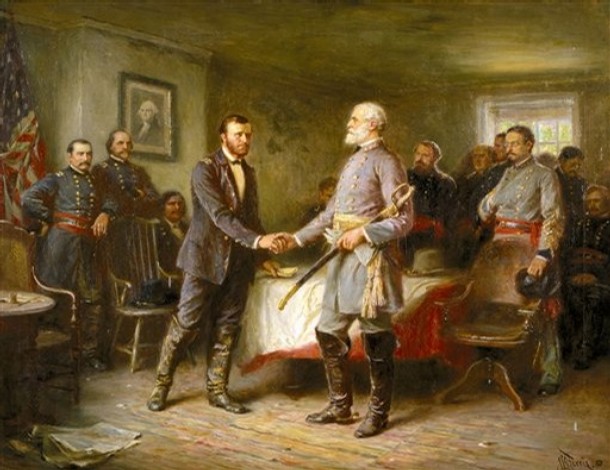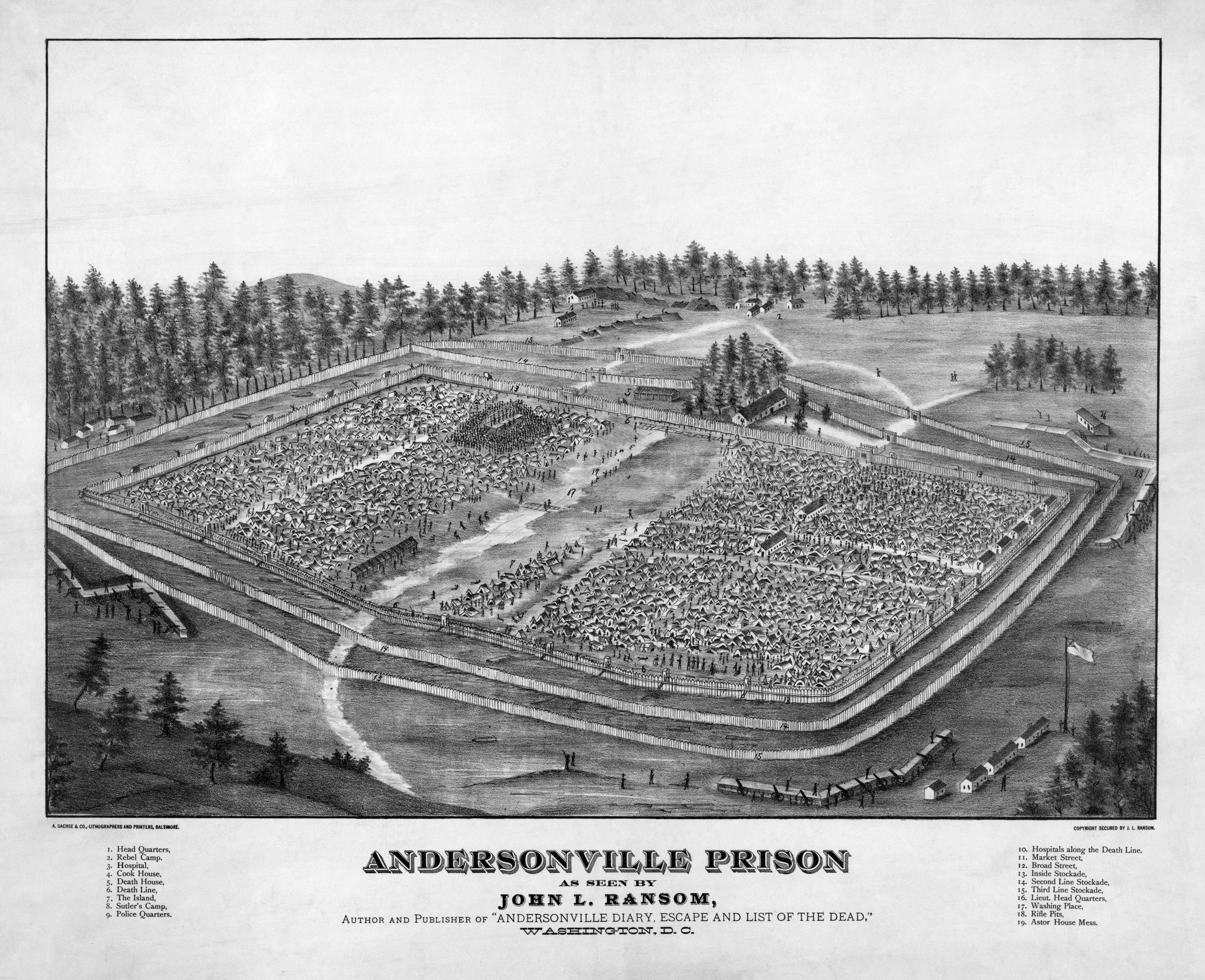Strengths and Weaknesses
The Confederate's main weakness was their small population compared to the Union. The Confederacy only had 9 million soldiers instead of 22 million in the north. Although the Confederacy had a smaller population they had very well trained generals and they were fighting on their own land. This meant that the south only had to defend their land instead of conquering land to win battles. The north on the other hand did not have well trained generals and they had to fight on unfamiliar land. One of the north's main strength was that they controlled the navy. The north also had many industries to help produce necessary supplies needed for war.

http://upload.wikimedia.org/wikipedia/commons/9/9a/Confederate_Rebel_Flag.svg

data:image/jpeg;base64,/9j/4AAQSkZJRgABAQAAAQABAAD/2wCEAAkGBxMHBhMIBxMVFQkXFxc
Ft. Sumter and Bull Run
Ft. Sumter was a very important battle that took place during the Civil War because it was the very first battle. The battle showed that the north would not give up easily and that it was the start of a big war. Bull Run was the next battle that took place during The Civil War on July 21, 1861. The battle taught both the north and the south a lot about the reality of war. The north saw the war as only a few easy battle where they would win very easily. At Bull Run many citizens came to watch the battle with their friends and family. This was because they did not understand how scary war is and that they would not win as easily as they had hoped.

http://www.learnnc.org/lp/media/uploads/2008/11/fort-sumter-bombardment.jpg
 http://nobility.org/wp-content/uploads/2012/08/surrender.jpg
http://nobility.org/wp-content/uploads/2012/08/surrender.jpg http://upload.wikimedia.org/wikipedia/commons/1/1d/Andersonville_Prison.jpg
http://upload.wikimedia.org/wikipedia/commons/1/1d/Andersonville_Prison.jpg http://nobility.org/wp-content/uploads/2012/08/surrender.jpg
http://nobility.org/wp-content/uploads/2012/08/surrender.jpg http://upload.wikimedia.org/wikipedia/commons/1/1d/Andersonville_Prison.jpg
http://upload.wikimedia.org/wikipedia/commons/1/1d/Andersonville_Prison.jpg http://upload.wikimedia.org/wikipedia/commons/1/19/William-Tecumseh-Sherman.jpg
http://upload.wikimedia.org/wikipedia/commons/1/19/William-Tecumseh-Sherman.jpg
 https://blogger.googleusercontent.com/img/b/R29vZ2xl/AVvXsEja3Rk3auPLaVfOvkvyL0SzuFa0uiBu63fD8V1sZHnrs9lil9SBOHhRdFa5e_WRQAToJHsUwA1DBLp8U6rUyKqep1SX88ZPZmQoF84eYDshQeZqf6fp3mqilyCkOmKcmNv8kwqmnhP-sJEk/s1600/Union_Blockade_run_Vicksburg.jpg
https://blogger.googleusercontent.com/img/b/R29vZ2xl/AVvXsEja3Rk3auPLaVfOvkvyL0SzuFa0uiBu63fD8V1sZHnrs9lil9SBOHhRdFa5e_WRQAToJHsUwA1DBLp8U6rUyKqep1SX88ZPZmQoF84eYDshQeZqf6fp3mqilyCkOmKcmNv8kwqmnhP-sJEk/s1600/Union_Blockade_run_Vicksburg.jpg http://upload.wikimedia.org/wikipedia/commons/d/d9/Chickamauga.jpg
http://upload.wikimedia.org/wikipedia/commons/d/d9/Chickamauga.jpg http://www.thecitiesof.com/tennessee/chattanooga/chattanooga-battlefield.jpg
http://www.thecitiesof.com/tennessee/chattanooga/chattanooga-battlefield.jpg
 http://upload.wikimedia.org/wikipedia/commons/thumb/c/c7/Thure_de_Thulstrup_-_L._Prang_and_Co._-_Battle_of_Gettysburg_-_Restoration_by_Adam_Cuerden.jpg/1280px-Thure_de_Thulstrup_-_L._Prang_and_Co._-_Battle_of_Gettysburg_-_Restoration_by_Adam_Cuerden.jpg
http://upload.wikimedia.org/wikipedia/commons/thumb/c/c7/Thure_de_Thulstrup_-_L._Prang_and_Co._-_Battle_of_Gettysburg_-_Restoration_by_Adam_Cuerden.jpg/1280px-Thure_de_Thulstrup_-_L._Prang_and_Co._-_Battle_of_Gettysburg_-_Restoration_by_Adam_Cuerden.jpg
 http://www.learnnc.org/lp/media/uploads/2008/11/fort-sumter-bombardment.jpg
http://www.learnnc.org/lp/media/uploads/2008/11/fort-sumter-bombardment.jpg Alexander Stephen was chosen as the Vice President of the Confederacy. At first he was not sure if he wanted the south to secede or not. Stephen agreed and supported the Compromise of 1850 only if the Fugitive Slave Law was enforced. As a result he found that slavery was eventually going to happen no matter what.
Alexander Stephen was chosen as the Vice President of the Confederacy. At first he was not sure if he wanted the south to secede or not. Stephen agreed and supported the Compromise of 1850 only if the Fugitive Slave Law was enforced. As a result he found that slavery was eventually going to happen no matter what.
 http://upload.wikimedia.org/wikipedia/commons/thumb/f/f7/Reynolds's_Political_Map_of_the_United_States_1856.jpg/1131px-Reynolds's_Political_Map_of_the_United_States_1856.jpg
http://upload.wikimedia.org/wikipedia/commons/thumb/f/f7/Reynolds's_Political_Map_of_the_United_States_1856.jpg/1131px-Reynolds's_Political_Map_of_the_United_States_1856.jpg
 The Fugitive slave act happened in the year 1850. The Fugitive Slave Act said that the citizens living in the state could vote on whether it was a free state or a slave state. The document also denied any jury trials while more government enforcement was used to enforce laws. Because of the this act if someone living in the north who found a runaway slave belonging to the south did not return them they would be fined. This was a major controversy in the Compromise of 1850 and gave motivation to abolitionist in the north.
The Fugitive slave act happened in the year 1850. The Fugitive Slave Act said that the citizens living in the state could vote on whether it was a free state or a slave state. The document also denied any jury trials while more government enforcement was used to enforce laws. Because of the this act if someone living in the north who found a runaway slave belonging to the south did not return them they would be fined. This was a major controversy in the Compromise of 1850 and gave motivation to abolitionist in the north.  http://www.historicfortsnelling.org/sites/historicfortsnelling.org/files/images/800px-Missouri_Compromise_Line_svg.png
http://www.historicfortsnelling.org/sites/historicfortsnelling.org/files/images/800px-Missouri_Compromise_Line_svg.png
